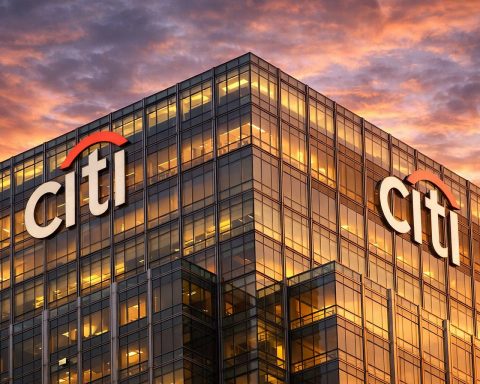- Stock snapshot: KO closed around $68.4 on Oct. 17, 2025 (up ~1.3% that day) [1]. The stock is modestly positive over the past month (+1.7%) [2] and roughly +8% year-to-date [3], amid a defensive, dividend-focused profile.
- Board and dividend news: Coca-Cola announced tech entrepreneur Max Levchin (PayPal co-founder and Affirm CEO) was elected to its board on Oct. 16, 2025 [4]. Simultaneously, the company declared a $0.51 quarterly dividend (3.0% yield) payable Dec. 15 [5], underscoring its long history of shareholder returns.
- Product innovation: In early October 2025, Coke unveiled plans to introduce 7.5‑oz “mini” cans (priced ~$1.29) and a cane-sugar–sweetened Coca-Cola in the U.S. market [6]. These new offerings aim to appeal to price- and calorie-conscious consumers amid sluggish soda demand.
- Strategic moves abroad: Reuters reports Coca-Cola is weighing a $1 billion IPO for its Indian bottling arm (Hindustan Coca-Cola Beverages) [7], potentially valuing the unit at ~$10 billion. In China, Swire Coca-Cola’s new Zhengzhou plant (part of a ¥12 billion expansion plan) began production in Oct. 2025 [8], boosting capacity in a key growth market.
- Analyst consensus: Wall Street remains broadly bullish on KO. All 15 recent analyst ratings are Buy (or Strong Buy) [9], with an average 12-month price target around $76.7 (≈+12% upside) [10]. Major brokerages (e.g. UBS, JPMorgan, RBC) have similar “Outperform/Buy” calls. Zacks notes the consensus forecast for Q3 (Oct. 21 release) is ~$0.78 EPS on ~$12.4 B revenue [11], implying modest year-on-year growth.
- Bull vs. bear views: Analysts praise Coke’s stability. Truist’s Bill Chappell calls it “one of the safest plays in what has become a minefield of challenges” (citing tariffs, FX swings, health trends) [12]. Brian Mulberry of Zacks emphasizes Coke’s “diverse offerings” – from low-sugar sodas to waters – which “have proven buoyant in the face of consumers cutting back on sugary drinks” [13]. Conversely, some caution that premium valuations leave limited near-term upside.
- Financials & dividends: KO’s fundamentals remain solid. Latest guidance shows organic revenue growth around 5–6% (in line with targets) [14], though growth has been driven mostly by price hikes rather than volume gains [15] [16]. Notably, KO trades at a higher P/E (~22–23× forward) than rival PepsiCo (~17×) [17] – a reflection of Coke’s wider global footprint. Its dependable dividend (60+ years of raises) and recently announced $6 billion share buyback program (through 2030) [18] provide support for income-focused investors.
- Competitive landscape: As the world’s largest beverage company, Coca-Cola competes fiercely with PepsiCo (PEP) and other global brands. Coke’s broad portfolio (Coke, Diet Coke, Sprite, Fanta, Dasani, etc.) and huge emerging-market exposure (e.g. India’s Thums Up) underpin its premium valuation. In comparison, PepsiCo’s footprint is more North America–centric. However, investors watch Pepsi’s moves (e.g. recent CFO comments on consumer trends) for signs of changing beverage preferences.
- Macro & sector factors: The macro picture is mixed. High U.S. inflation and interest rates have squeezed consumers, which can temper soda consumption [19]. Some analysts warn of an “Ozempic effect” (weight-loss drugs reducing junk-food demand). Trade and currency fluctuations also pose risks. On the flip side, KO’s low market beta (~0.4) and defensive business mix have helped it hold up in recent market pullbacks [20]. If the economy stabilizes or growth accelerates, Coca-Cola could benefit from pent-up demand – in line with views that a Dividend King like KO would “do even better if economic growth takes off” [21].
Sources: Recent Reuters and MarketBeat analyses, and The Coca-Cola Company’s own filings and press releases (cited above), provide the data and quotes used herein [22] [23] [24] [25] [26]. The market data reflect trading as of Oct. 17, 2025.
References
1. finviz.com, 2. finviz.com, 3. ts2.tech, 4. investors.coca-colacompany.com, 5. investors.coca-colacompany.com, 6. www.reuters.com, 7. www.reuters.com, 8. en.people.cn, 9. www.marketbeat.com, 10. www.marketbeat.com, 11. finviz.com, 12. www.reuters.com, 13. www.reuters.com, 14. ts2.tech, 15. www.reuters.com, 16. ts2.tech, 17. ts2.tech, 18. ts2.tech, 19. ts2.tech, 20. ts2.tech, 21. ts2.tech, 22. www.reuters.com, 23. www.reuters.com, 24. investors.coca-colacompany.com, 25. www.reuters.com, 26. ts2.tech









